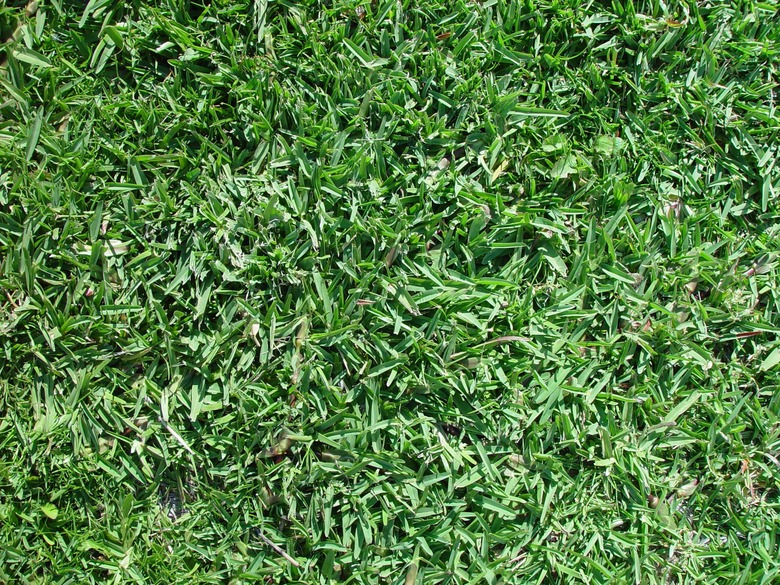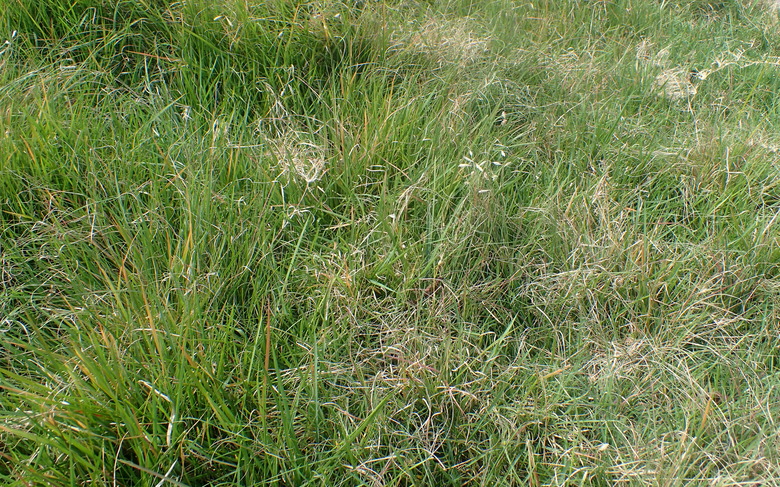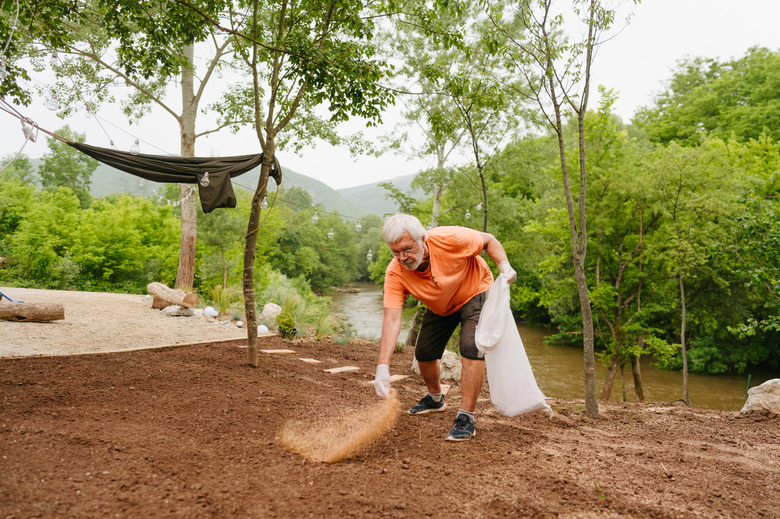Buffalo Grass: A Guide To Different Types And Starting Your Lawn
Learning about the different types of buffalo grass will help you make an informed decision before planting a turfgrass lawn or grazing pasture for your animals. Sometimes spelled buffalograss, buffalo grass (Bouteloua dactyloides) is a warm-season grass that grows best in USDA hardiness zones 4a to 8b, where it stays green from late spring until the first frost in autumn.
Tip
Buffalo grass is sometimes labelled with its old scientific name, Buchloe dactyloides.
Buffalo grass comes in many different cultivars that can create a lush, low-maintenance lawn or good grazing for livestock but only when grown under the right conditions. Finding which one works for your landscaping is easy to do and is the first step toward planting your brand-new lawn.
Pros of Buffalo Grass
* Tolerant of drought and cold
- Disease resistant
- Low fertilizer requirement
- Needs less mowing
Cons of Buffalo Grass
* Shade intolerant
- Poor weed resistance
- Doesn't tolerate saline soil
All About Buffalo Grass
Buffalo grass is a North American native grass that comes from the shortgrass prairies of the Great Plains region. It can be mowed into turf or grown as an ornamental grass mixed with wildflowers, because it forms seed heads that have an airy beauty to them.
Buffalo grass is chosen for use in native grass lawns because it is attractive, and native lawns are typically more drought tolerant than lawns grown from exotic grasses.
Buffalo grass is a clump-forming grass that can reach a height of 8 inches with a 12-inch spread. It spreads by seeds and by stolons, which are creeping plant stems that spread into the surrounding soil. **This combination of root system growth, attractive gray-green color and the ability to stand up to mowing makes buffalo grass a durable turf type.**
Buffalo Grass Types
All buffalo grass types share traits in common, but each cultivated variety, or cultivar, has its own characteristics that set it apart.
Texoka
Texoka (Bouteloua dactyloides 'Texoka') is the oldest cultivated variety of buffalo grass. It grows best in USDA hardiness zones 2 to 9, where it is grown primarily for livestock grazing, because it lacks the dense growth habit of turfgrass varieties. Female and male plants are both represented in Texoka, so you will have some plants that bloom and others that won't.
Texoka begins growing in early summer and enters dormancy with the first frost. It is a very drought-tolerant buffalo grass variety and will adapt to a range of climatic conditions, but it must be grown in full sun and at elevations below 5,000 feet to perform well.
Sundancer
Sundancer (Bouteloua dactyloides 'Sundancer') grows best in USDA hardiness zones 4 to 9, where it is used as turfgrass. It produces a dense growth of dark green leaf blades, which green up in early spring when other buffalo grass cultivars are still dormant. Unlike many other buffalo grass varieties, Sundancer retains some of its color into the autumn months.
Although Sundancer is an adaptable grass variety, it does not grow well in sandy soil and should be planted in loamy soil with good moisture retention.
Bison
Bison (Bouteloua dactyloides 'Bison') is a relatively new buffalo grass cultivar that grows best in USDA hardiness zones 2 to 9. It was created using genes taken from Texoka and other varieties to produce a dark green, low-growing and soft textured grass suited for golf courses, pastures and for seeding a soft, dense buffalo grass lawn.
Prairie
Prairie (Bouteloua dactyloides 'Prairie') is a buffalo grass variety that must be grown using vegetative methods, such as plugs or sod. It is adaptable to a range of growing conditions but will only perform well in USDA plant hardiness zones 3 to 10. Prairie is comprised of female plants that bloom at the beginning of the growing season in summer, producing small and insignificant flowers followed by airy seed heads.
Prairie is a very low-maintenance turfgrass variety that can outcompete weeds, so it makes a lawn that requires minimal applications of herbicide. It is also noted for its unusual bright green color, sometimes described as "Granny Smith apple" green.
Cody
Cody (Bouteloua dactyloides 'Cody') is a buffalo grass variety that will create a low-maintenance lawn in USDA hardiness zones 4 to 9. It establishes quickly and will produce a dense, nonpatchy lawn of dark green leaves after just a few months.
Cody is more winter hardy than many other buffalo grass varieties, and it is moderately drought-tolerant—so it is a good choice for transitional climates with dry summers and cold winters.
Starting a Buffalo Grass Lawn
Now let's take a look at the process of starting your own buffalo grass lawn.
Growing Buffalo Grass Seed
Summer is the time to prepare a planting site and sow buffalo grass seeds. Early planting results in poor germination, because the soil must be warmer than 55°F for germination.
1. Prepare a seedbed in a sunny area with loamy, fast-draining soil. Avoid planting buffalo grass in shady areas or in areas with poor drainage. 2. Remove all rocks and other debris from the soil. Till the soil to loosen it and to unearth any pieces of debris from below the surface. 3. Even out the soil surface with a roller, which will create a more uniform surface and a smoother lawn. 4. Spread the buffalo grass seed across the seedbed using either a seed drill or a seed spreader at a rate of 3 to 5 pounds of seed per 1,000 square feet of area. Set the seed drill to deposit the seed at a depth of 1/2 inch. If you spread the seed using a spreader, the seeds must be covered with a 1/2-inch-thick layer of soil. 5. Keep the soil evenly moist using sprinklers. Germination of buffalo grass seed typically takes 15 to 21 days when soil temperatures stay warmer than 55°F.
Growing Buffalo Grass Plugs
Planting with plugs is a vegetative propagation method used for buffalo grass varieties such as Prairie. The process is simple but somewhat labor intensive.
1. Prepare a planting site in early summer. Choose a spot with at least six to eight hours of sun each day and loamy, fast-draining soil. 2. Dig planting holes using a garden trowel. Space the holes 6 to 12 inches apart and make them just deep enough to hold the root ball of the plug. 3. Stick the buffalo grass plugs in the planting holes. Lightly cover the plugs with soil. 4. Use a roller to even out the surface and firmly press the plugs into the planting bed. 5. Keep the bed well watered for one to two weeks while the plugs become established.
References
- North Carolina State Extension: Bouteloua dactyloides
- Colorado State University Extension: Buffalograss Lawns
- Lady Bird Johnson Wildflower Center: Bouteloua dactyloides
- Texas A&M AgriLife Extension: Buffalograss
- Johnston Seed Company: Bison Buffalograss
- Great Basin Seeds: Texoka Buffalograss
- King Ranch Turfgrass: Prairie Buffalograss
- University of California Statewide Integrated Pest Management Program: The UC Guide to Healthy Lawns


